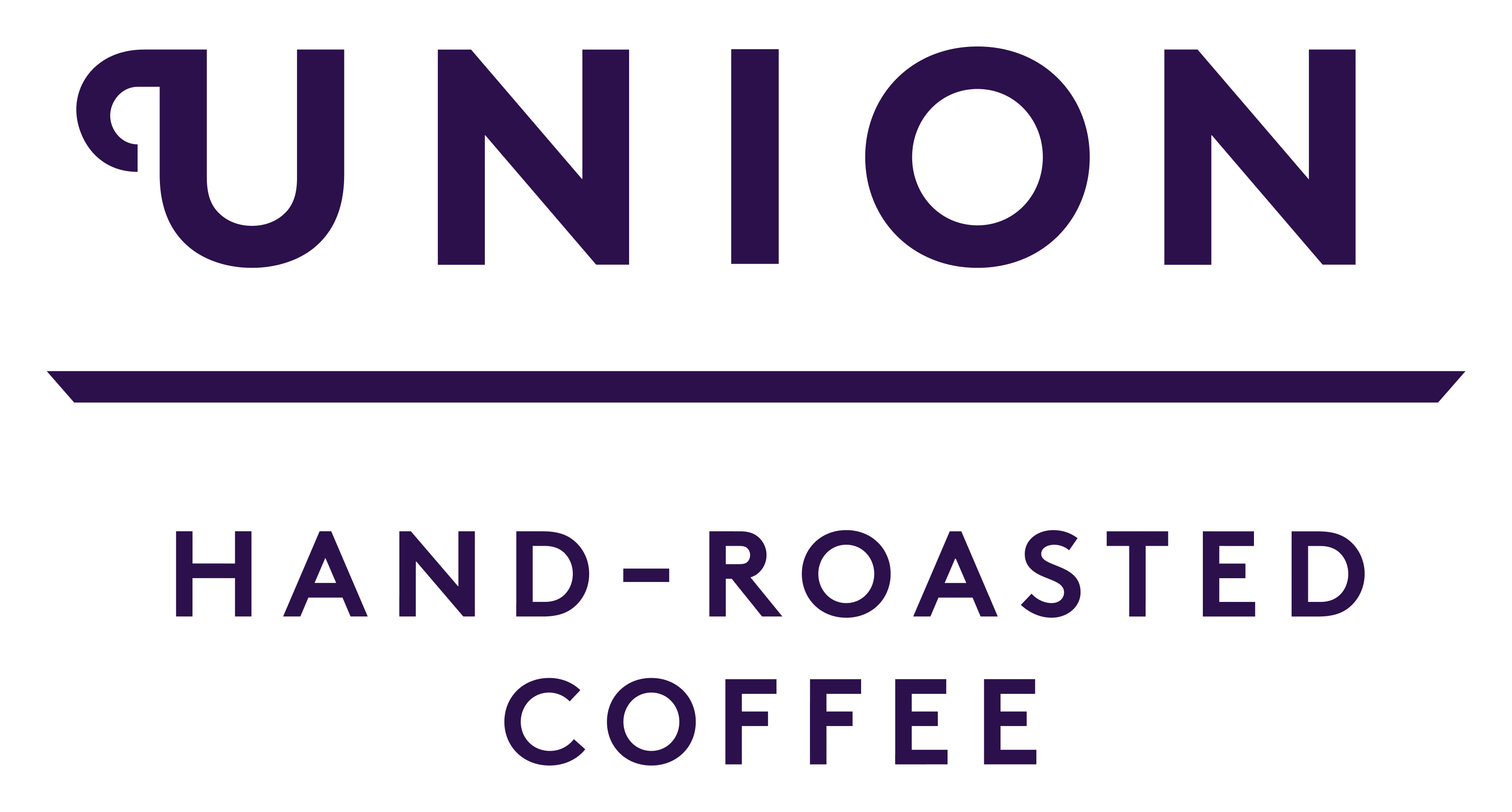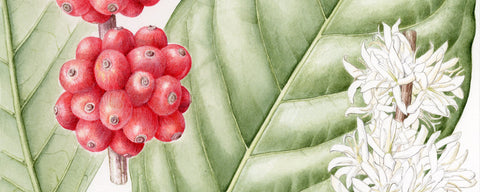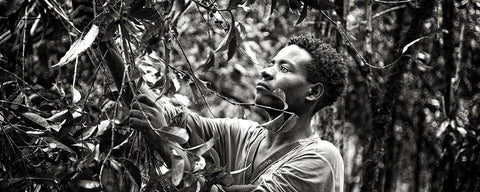First Published - August 7, 2009
One of the defining characteristics we talk about in fine quality coffee is sweetness. In the case of Brazil, a country often accused of exporting the largest quantities of basic neutral commodity coffee, we have been lucky enough to work for the last eight years with one of the sweetest producers I have known. Raymond Rebetez, owner of the Fazenda Lambari is genuinely one of the nicest people I have come across in the coffee industry, and his coffee matches his personality in its integrity and manner completely.
Although we have met at conferences and coffee trade exhibitions many times over the last few years, I last visited Raymond in June 2003 whilst touring the region looking at the various methods of coffee production that have been pioneered in Brazil. Spending a day with him at Lambari, a farm that at that time we had already been sourcing from for two years, he took me to the nearby Fazenda Irarema; a place that he said was truly special. The farm had been under the same family since its inception in the late 1890’s and the farm house, a beautiful villa is on this visit my base for he week as Raymond finally agreed to purchase the farm when the elderly couple retired and wanted to move to the city.
On this visit I was joined by Mariusz Mistewicz who last year started a company called Fair Coffee in Poland and who are distributing Union Hand Roasted to a new and growing café sector out there. Along with Mariusz and his wife Hannah, we are accompanied by Radoslaw Darnowski a talented Barista from the Coffee Heaven chain who is the current Polish WBC latte Art Champion, and winning competitor in our first Polish Barista Championships. Visiting origins and seeing producers at first hand is an excellent opportunity for a Barista to really get to understand what makes some of the rich flavour tones in a great espresso blend; for this style of coffee Brazil really has some tricks up its sleeve.
In just about every aspect of its coffee, Brazil is truly unique. The amount of land under coffee cultivation produces the worlds largest single country crop, and it’s this aspect that has generated the very best as well as the worst for the country’s reputation. Most of the country’s farms average around 10 hectares with the coffee being picked and sold on to commoditised exporters that bulk the coffee without regard for regionality and sell it as Brazil Santos, a generic trade name for standard Arabica coffee (Santos is the name of the port out of which the coffee is shipped). A very small percentage operate larger concerns, and Lambari with its sister Fazenda Irarema are examples at the mid-size range each with around 250 hectares under coffee. Talking this week with people at the higher quality end of the industry, I understand that there are around 300,000 growers in Brazil, but possibly only around as small a number as 200 are producing the sort of quality that Union is interested in.
So what is it that distinguishes this outstanding cup from the millions of others produced? As I have seen this week, it often comes down to true passion and commitment. First of all, you have to have good land in the right place. Compared to the mountainous Central American countries with high growing areas of around 1,200-1,650M (4,000 – 5,500ft) altitude, Brazil is a relatively low lying country, and even with its traditional Bourbon derived style of low acidity and smooth chocolate in the cup, the coffees grown at 600m (2000ft) are flat and uninspiring in the cup.
Fazenda Lambari sits in the cooler climes at around 1,100M ((3,600ft) so the trees produce smaller yields of slower maturing cherries with depth, clarity of flavours and a delicate balancing acidity that is drawn out and complemented by outstanding natural sweetness.
The real ‘trick’ that brings out this sweet character is the unique approach to harvesting and the subsequent sorting and processing methods developed by Brazil producers known as Natural, and Pulped Natural preparations. These methods have arisen both in response to optimising the character of the coffees in the cup, but also as a strategy for managing the large volumes of cherries that can arrive at the milling stations daily during the three months of the harvest season.
Whereas in most countries, we work with farmers to religiously only pick the perfect ripe red cherries, in Brazil, the trees when ready for harvest appear as if they have been forgotten or abandoned with red – ripe and over ripe black shrivelled cherries still hanging from the branches.
Normal wisdom would suggest that the crop would be ruined, but when picked and sorted using controlled water flows through the mill equipment, two streams of well separated fruit emerges –the perfect ripe coffee which sink in the flows and are collected for pulping, and a channel that is skimmed from the floating over-ripe fruit that is then taken direct to the drying patios where the whole fruit is dried around the bean.
This latter group is referred to as the natural process, and the act of drying whole concentrates the sugars and develops the body in the coffee making it an excellent base for certain Espresso blends but these coffees have to be handled carefully as when fresh from the farm are very wild in flavour – gamey, woody, earthy notes can all predominate yet after resting for up to three months, all of these weird characters seem to meld into a smooth chocolate like base and the gentle acidity and soft nutty flavours really start to show in an elegant yet rich style.
The carefully separated ripe cherries, after pulping then also go to the patios where the still attached mucilage (which in central American coffees is fermented and removed) is allowed to dry around the bean yielding a lighter cup than the Naturals, still having wonderfully sweet tones but ones that are balanced with more developed acidity that characterises the Brazilian Pulped Natural style. This lighter but smooth and flavourful coffee always reminds me of Californian Chardonnay wines – slightly nutty Oaky nuances but with a seductive note of clarified butter that really caresses the palate making it seem fresh but indulgent all at the same time. Its an elegant coffee that we roast unblended as our Fazenda Lambari Estate coffee whilst the Lambari Naturals provide a rich complement to our Bright Note Espresso Blend.
Having also tasted on my visit a number of commercial coffees from the region I urge anyone exploring coffees of Brazil to try Union’s Roasting of Raymond’s Fazenda Lambari – it genuinely is different – just as I used the wine analogy above, Fazenda Lambari would be a prince amongst Chateaux and not your average party wine. The happy fact is that we don’t charge fine wine prices for it – so try it and enjoy along with your favourite weekend breakfast, its fantastic with croissants and pastries – the more butter the better! Enjoy.
Farm notes July 2009
FAZENDA IRAREMA
This farm, about four hours drive from Sao Paolo is where I am staying on my visit. Its located on the slopes of a valley called Vale Da Grama in the Serra Da Mantiqueira mountain range, reputed to be the oldest range in the Americas – formed from volcanic action, the nearby spa town and regional holiday resort, Pocos de Caldos is nestled within the bowl of one of these.
The mountains name means ‘the mountain that cries’, and is the old Brazilian Tupi Indian name, the most prominent indigenous group.
Varietals grown: Red and Yelllow Bourbon and Mundo Nouvo.
Irarema is one of the oldest farms in the region, the valley first being settled for farming by the Carvhalos Dias Family, a forebear of whom after being widowed, moved to the valley for the health benefits of the spring waters in 1850. The first farm, Fazenda Recreio, was established with coffee trees in 1890, and it is this farm that according to Brazilian custom was progressively divided amongst subsequent generations giving rise to the small group of eight that exist in the valley today. Fazenda Irarema, established two years later in 1892 along with neighbours Sao Manoel Dos Brejoes and Santa Alina are stunningly beautiful farms each around 250 hectares of well tended trees arranged in elegant rows on the sunny North facing slopes (southern hemisphere remember!) of the valley.
During my visit this time, a surprise discovery was that on the Santa Alina farm, a small area of around 2 hectares of original planting from the 1890’s still exists. These 120 year old trees amazingly are still producing coffee, although a very small amount per tree. The present owners were about to tear these out and replant, but thanks to Raymond’s persistence (owner of Irarema and Lambari farms), they have retained these and are tending them carefully as a special project. After some extensive research, it seems that nowhere in the coffee producing world can trees of this age be found, and they are exactly what was planted back in the pioneering days of the brazil coffee ‘industry’.
The trees we see are very tightly packed masses of wild branches and stems – apparently in the old days, in case trees did not take, the farmers would plant 4 seeds in a hole wheras today, seedlings are brought on in nurseries and then are planted out in to the fields in separated pairs. On inspection it was apparent that in this highly fertile area, all the seeds in a hole not only survived germination but have thrived for the last 100 years!
I’ve managed to get the owners to give me a sample of this coffee and Steven and I will sample-roast and cup the coffee back in London next week – if its as good as I’m told, we have a handshake agreement that Union will buy about five 60Kg sacks of this (they give all the rest to special friends) so keep an eye on our blog and website for the cupping results.
The Bourbon varietal grown in this valley is now a scarcely found in Brazil, as the original plantations are refreshed with modern cultivars that grow more successfully in the lower latitudes. Bourbon was first brought to Brazil in the 1880’s from Asencion Island as a red cherry variety which locally mutated into a yellow that is often seen on the trees today. Also commonly found are red and yellow catuai, the latter being a very sweet fruit and excitingly this forms a part of the wonderful Lambari crop that we have been working with since 2001.
Aside from the great tasting varietals here in the valley the other aspect that is responsible for the elegant yet gentle acidity in the coffee is the altitude. Good arabicas do need the cooler slower maturation afforded by the higher elevations yet Brazil’s cultivation is mainly at lower levels compared to the great Central American regions. Our happy family of farms here in the Mantiqueira’s peak out at between 1,100 and 1,300M however; the highest to be found in the country. This exceptional location along with the care and attention given to the trees and harvest processing is why our Brazil selections are so much clearer, sweeter and more elegant when compared to the majority of Brazil coffee to be found on the shelves. If it was not for Raymond and his passion and dedication, I don’t think Union Coffee would be offering Brazi coffees today.
LAMBARI
Varietals grown: Acaia and Catuai plus small amount of Mondo Nuovo.
The first Brazil farm that Union sourced coffee from in 2001; before this our feelings were that the generally recognised ‘mild brazils’ did not have enough character to develop in our demanding roast style. My experience here year after year has proved that a few producers in this vast country are deserving of our attention. OK the coffees do not show the ‘high drama’ of our Santa Ana La Huerta Guatemala or the lighthouse beacon of a vibrant Rianjagi Kenya, but the elegant, comforting sweetness of the pulped natural coffees; the velvet smooth full bodied natural processed provide a sublime pleasure in easy all day drinking in filter or cafetiere brews and a rich base for lighter espresso styles.
Lambari today has around 270 Hectares of coffee cultivation with another 120 hectares dedicated to preservation of natural forest and wildlife habitat. Since 1995, Raymond has retained naturalist and agronomist Lina de Souza to survey and maintain the biodiversity on the farm.
Around 30,000 trees have been planted around the farm area where pockets of natural forest are maintained so as to provide continuous corridors of non farmed land for animals to pass through the area whilst remaining within their natural habitats. Recent surveys have documented around 160 species of birdlife and this in an area where the coffee is not grown under a shade canopy. In fact in Minas Gerais, where our farms are located, no coffee is shade grown as the latitude does not give strong enough sun to require this and the experiments with such growing have only produced spindly trees with low yields of cherries that do not ripen sufficiently. Not all coffee growing suits this methodology as some of the ‘environmentalists’ would suggest.
In past years, Fazenda Lambari has processed its own coffee in a mill and on drying patios right on the farm itself. This year however, as we are in a low harvest year (Brazil crop volumes alternate between full output and a ‘recovery’ year when the trees yield is naturally lower) the crop is being processed at Irarema where the larger and more modern mill unit, handles Lambari’s cherries still in separate batches for complete traceability. This partnership between the two farms allows cost to be managed and the best technical resources to be focussed on really optimising quality in the crop. Next year as volumes will be double this, each farm will manage its own coffee so neither is overwhelmed with quantity over quality.
Walking around the patios and mill area at Lambari with Raymond, we both notice how it does seem strange for the mill here not to be running at the harvest time, and indeed many of the farm workers were very dubious about sending the coffee over to their neighbour for processing – they are rightly proud of what they produce, but when it was explained that with a low volume crop, Raymond could not afford to run two mills with each only operating at about 30% of their capacity. and that this partnership with Irarema would mean long term stability and a future for both farms their support and understanding was assured.
ANORAK FACTS
Originally, planting was done by placing coffee seeds (beans) in small holes in the fields as opposed to the modern practice of germinating and bringing on in nursery beds before planting out into the fields.
Four seeds per hole were commonly planted (in case some didn’t make it) and in the old planting area we found at Santa Alina, four stems can clearly be seen at the bases.
Each ‘tree’ (sometimes with up to 4 stems) were planted out at about 1M intervals and rows spaced at 2M. Traditional planting such as this produced around 1200 – 1500 trees per hectare, whereas today 2 seedlings are planted together at 60-90cm spacing which generates 5000 trees per hectare.
Coffee is shipped from Brazil in 60Kg Jute sacks
Each sack contains 500,000 beans
Due to loss of weight from pulping, washing and final milling of the parchment skin from the final coffee bean, it takes 450Kg of harvested cherries to produce one 60Kg sack of exportable coffee.
The region receives around 2500mm rain per year so good ground cover pants are essential to bind the light mountain soils and prevent erosion
Terracing also used to reduce water flow down the valleys and retain nutrients in the soils around the plants.







